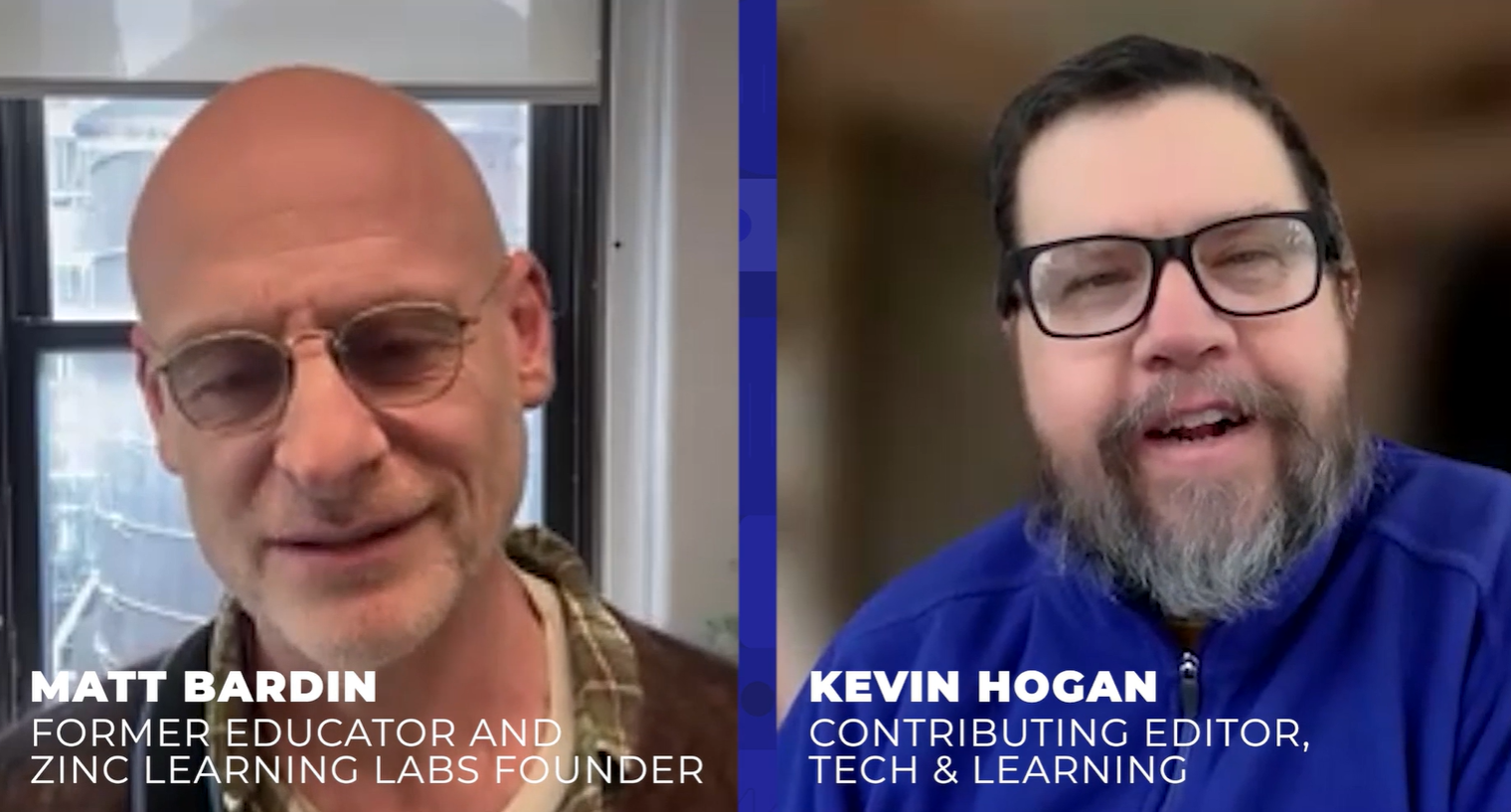Defining Digital Curriculum

Next to “professional development,” “digital curriculum” may be the most vague catchphrase thrown around in education circles. What does it mean? Do you have one? How do you implement one? We asked two working groups during our CIO Summit to distill the term into real, practical pieces of information and advice. Hopefully, it will help clarify this term.
How do you define the phrase digital curriculum?
“To me, it is any digital media that teachers and students use for learning. We have brand new textbooks that have digital components, as well as a variety of other digital media that we are aggregating into one system for everyone to access. Students and teachers will be able to use this system, along with Google Apps for Education, to share and access materials and student work.”
— David Andrade, CIO, Bridgeport Public Schools, CT
“I would describe it as a portfolio of electronic resources (as opposed to textbooks) composed of blogs, wikis, Twitter, journalism artifacts, video/ audio, real-time digital collaboration (e.g., Skype) and projects and personal learning networks that are used for engaging, instructing, and assessing students and staff. I would expect students and staff to be connected to these resources daily and in every aspect of the learning process and to personalize their learning through the use of technology.”
—Ray Eernisse, CIO, Francis Howell School District, MO
What do you consider the most important aspect of directing a successful digital curriculum initiative?
“The key is to have the leadership of the technology department report to the leadership of the curriculum organization. We are in an educational business, not a technology business. Student learning drives our decisions.”
—Alan Landever
“Allowing tech leaders to sit in on curriculum meetings to hear the discussion and offer suggestions would help create more of a partnership. Likewise, allowing curriculum leaders to sit in on tech meetings would help create a healthy partnership. This would help create a more synergistic workflow as well.”
—Todd Hellrigal, Superintendent, Midwest Central 191, IL
Tools and ideas to transform education. Sign up below.
“The superintendent must have the vision to arrange the administrative team in a way that brings the different sides of the house together with a common understanding. In my district, technology has always been under the educational services umbrella, so communication and collaboration with the curriculum side has always existed.”
—Jon Castelhano
What has been your process for implementing a digital curriculum?
“[We’ve made a] shift from a topdown, centrally controlled, and vetted environment to a philosophy and approach of building a “portfolio of schools.” Thus, schools with IB, AVID, Montessori, Waldorf, Advanced Path, or other personalized or innovative models of instruction and governance all constitute the family of programs within the district system and will create and curate digital learning resources.”
—Carl Fahle, Sr.
“We recently revised our curriculum cycle to a six-year cycle that is led by our Curriculum Advisory Council and reviewed by the Academic Strategic Planning Committee prior to board action. Year 3 of the cycle is the resource pilot phase, where content leaders review and may pilot a variety of resources with staff. Year 4 is the actual adoption year for the resource.”
—Ray Eernisse
Kevin Hogan is a forward-thinking media executive with more than 25 years of experience building brands and audiences online, in print, and face-to-face. Kevin has been reporting on education technology for more than 20 years. Previously, he was Editor-at-Large at eSchool News and Managing Director of Content for Tech & Learning.
